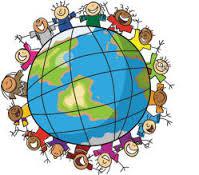Setting on the Thanksgiving dinner table with her parents, grannies, and siblings, Emma found herself in a round table of rich discussions where she was excepted to fully participate for he first time as she’s a college student now and fully an adult.
Emma’s grandma kept asking her about college life, affirming to her that education is a very important stage of one’s life because being able “to read books and write things are what make you a successful citizen.”
but is it really? …
Literacy as known by older generations seems to have a narrow definition that is restricted to reading and writing.
However, being 21st century generations, we can easily tell that this is no longer the case because our contemporary world is so different than that of our grandparents and therefore, what makes us literate citizens today goes way beyond our ability to read books and write letters.
According to Jones-Kavalier and Flannigan’s article Connecting the Digital Dots: Literacy of the 21st Century, literacy has assumed new complex meanings because of the “rapidity with which digital technology has changed our society”.
To be literate is to be fully functional in society, according to Jones-Kavalier and Flannigan, and in a society where digital media and digital technologies are a seamless part of the daily life, literacy has to change too.
The National Council for Teachers of English (NCTE) agrees confirms this concept with their position statement on The Definition of 21st Century Literacies.
In this statement, they argue that ” Because technology has increased the intensity and complexity of literate environments, the 21st century demands that a literate person possess a wide range of abilities and competencies, many literacies.” These literacies, they argue, ought to be “multiple, dynamic, and malleable,” as “Active, successful participants in this 21st century global society must be able to:
-
Develop proficiency and fluency with the tools of technology;
-
Build intentional cross-cultural connections and relationships with others so to pose and solve problems collaboratively and strengthen independent thought;
-
Design and share information for global communities to meet a variety of purposes;
-
Manage, analyze, and synthesize multiple streams of simultaneous information;
-
Create, critique, analyze, and evaluate multimedia texts;
-
Attend to the ethical responsibilities required by these complex environments.”
